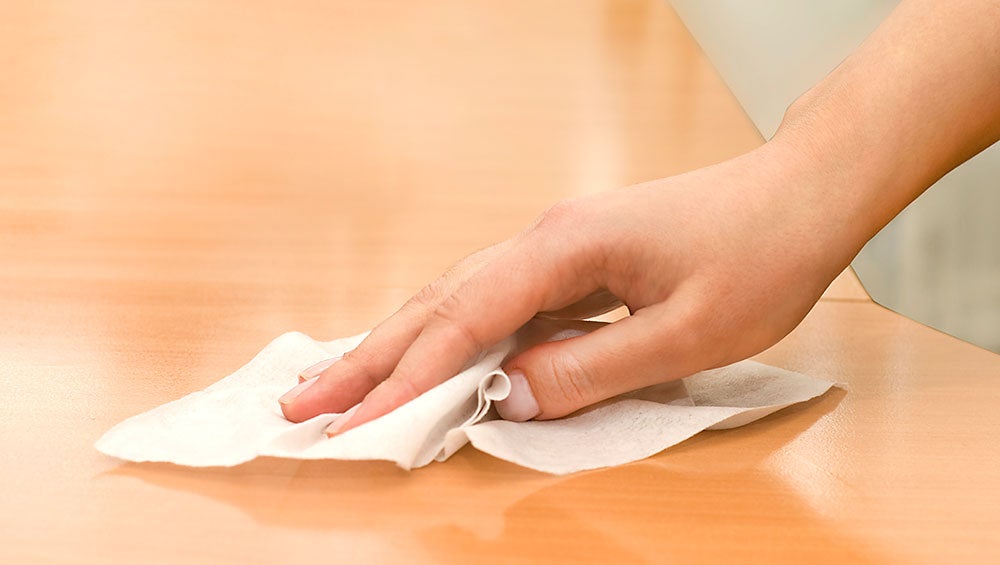Should You Wash Your Hands After You Wipe? The Difference Between EPA Personal Protective Equipment Requirements Versus Best Practices

What does the product signal word and precautionary text on your product mean?
Cheeky title aside, in this blog I want to help answer the questions about what EPA toxicity categories mean, and how these relate to signal words, precautionary text and potential personal protective equipment (PPE) requirements.
EPA determines toxicity categories, precautionary statements, signal words and potential PPE requirements for products1
You will always find precautionary statements and signal words on products.
- Precautionary statements provide information about the toxicity, irritation, and sensitization hazards associated with using the product. Precautionary text also provides treatment instructions and information to reduce exposure potential.
An example of a precautionary statement may be “Causes moderate eye irritation. Avoid contact with eyes or clothing. Wash hands thoroughly with soap and water after handling.”
- The signal word describes the short-term toxicity of a product. The signal words are DANGER, WARNING, or CAUTION. DANGER means a product with higher toxicity than a product with WARNING, which is more toxic than a product with CAUTION. A product that is the lowest toxicity will not have a signal word. (See Table)
Precautionary text and signal words are determined by EPA. EPA reviews data from 6 toxicity studies that manufacturers are required to submit. These studies include information about toxicity dose by oral ingestion, through the skin, or by breathing, as well as expected responses to exposure through the eyes or on the skin. The test results fall under one of 4 EPA toxicity categories, which range from I (most toxic) to IV (least toxic). The results of these toxicity studies and categories determine the signal word and the PPE requirements (see Table). The signal word is determined by the highest toxicity category among all 6 submitted studies. For example, if 5 of the 6 toxicity studies for a product are toxicity category 4, but one of the studies is toxicity category 3, the product overall will have a signal word CAUTION and no PPE requirement.
| Signal Word | Toxicity Category | Potential EPA PPE Requirements |
|---|---|---|
| DANGER | I | Appropriate PPE based on product hazard usage and potential exposure |
| WARNING | II | Appropriate PPE based on product hazard usage and potential exposure |
| CAUTION | III | None |
| None | IV | None |
Based on the testing submitted to EPA, it is possible that EPA will not require PPE for a product. However, EPA is not the only agency responsible for setting guidelines on PPE.
Your facility and OSHA may have different requirements for PPE, regardless of EPA rules
Notice how the EPA potential PPE requirements state that products with toxicity categories I and II use “appropriate PPE based on product hazard usage and potential exposure.” For products used by cleaning industry professionals, appropriate PPE will be determined by OSHA and their facility. Additionally, the Safety Data Sheets for a product provide important information about toxicity data and hazard categories that could differ from EPA requirements.
EPA sets PPE requirements based on product hazard, not task hazard, whereas a facility or employer should make recommendations based on the job tasks. For example, there are products with no EPA required PPE that are effective against blood-borne pathogens HIV and HBV. However, it is an OSHA requirement that impervious gloves, gowns, masks, and eye coverings be worn for any disinfection of material potentially contaminated by bloodborne pathogens2. The EPA product master label will also include these same PPE guidelines and instructions for disinfecting bloodborne pathogens, even if the product does not otherwise have an EPA PPE requirement.
Professional custodians should wear gloves and wash their hands after tasks regardless of the EPA PPE requirements of a product, and this is a standard recommendation in cleaning operations.
As another example of hazards posed by the disinfecting task, let’s look at a food-borne illness that can be spread by contact with raw chicken: the bacteria E. coli. Surfaces that contacted the contaminated raw chicken will need to be cleaned and disinfected. Whether you use a disinfecting wipe, or a disinfecting spray followed by wiping with a paper towel, your hands and anything that touched the contaminated surface may now also be contaminated. If you don’t wash your hands after disinfecting the surface, you risk getting sick from E. coli or spreading it to other surfaces. Regardless of the product, washing hands and wearing appropriate PPE for disinfecting is important to help protect yourself and others.
So, should you wash your hands after using a disinfecting wipe that has no EPA PPE requirement?
YES! Remember, if you are disinfecting a surface, it is because the surface is likely dirty or contaminated with pathogens, and these can contaminate your hands too, which can then be transferred to other surfaces, where they may make you or others sick.
And if someone tries to convince you that you don’t need to wash your hands after disinfecting — consider not shaking hands with them.
References
1. Revised March 2018 label Review Manual – US EPA [Internet]. Environmental Protection Agency; [cited 2022Sep20]. Available from: https://www.epa.gov/sites/default/files/2018-04/documents/chap-07-mar-2018.pdf
2. Model Plans and Programs for the OSHA Bloodborne Pathogens and Hazard Communications Standards [Internet]. Occupational Safety and Health Administration; [cited 2022Sep20]. Available from: https://www.osha.gov/sites/default/files/publications/osha3186.pdf






